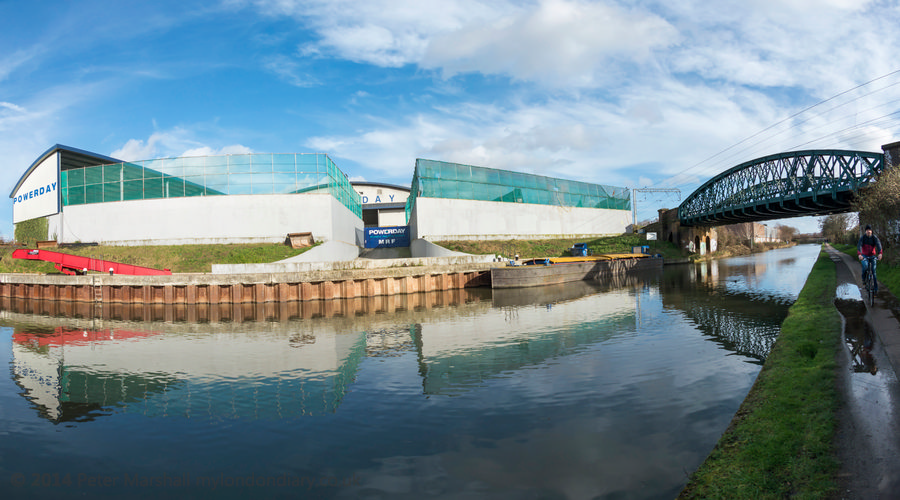
The line from Richmond to Willesden Junction goes over the canal on the bridge at the right.
Trains are my favourite form of travel – if I have to travel. Though I don’t always feel good about them when I need to join the rush hour crush to or from London, especially when SouthWest Trains put on a 4-car unit in place of the normal 8 carriages, as happened at times during the flooding. They’ve also developed a habit of doing the same trick (doubtless simply to save their costs) on some Sunday services which leave many standing, though not quite at the sardine level of rush hours.
But given that the trains are running reasonably to time and have sufficient room, trains are a civilised way to travel. Generally comfortable, seats with enough width and legroom at least for a person of my reasonably average size and smooth and fairly quiet (one of the few ways the railways have improved since my youth, though if they still had windows you could open and stick your head out you would no longer get soot in your eyes.) You can sit and read a book, or look out of the window at the changing scene.
One of my favourite journeys for looking out of the window always used to be the line around the north of London, which used to run from Richmond to Broad St, right into the City of London. Though in the old days you did need to clean the outside of your window before boarding if you wanted to see out. The journey perhaps got even more interesting when the service changed to run to North Woolwich via Stratford after the closure of Broad St in the 1980s, though I missed the section between Dalston Junction and the City.
The line is still fascinating, though with the new Overground trains you sit with your backs to the window and get a crick in your neck trying to look out. But the transfer to TfL has certainly resulted in a better service on the line. For much of its route it gives an elevated view of the northern suburbs of London, reaching parts that might otherwise remain unknown except to their residents. I’m one of many photographers of London have used it as a basis for projects, either formally or informally in past years, and Mike Seaborne‘s series very loosely linked to it is one example.
One particular area on the line where I usually put down my book and look out is just before Willesden Junction, where the line crosses the Grand Union Canal before going through an industrial area and reaching the station. (Like Clapham Junction which isn’t in Clapham, Willesden Junction isn’t in Willesden – railway companies appear to have delighted in confusing travellers from their early days.) Many years ago I took many pictures around this area, but since then it has changed quite a bit, and every time my train has gone through I’ve thought it would be good to get off and take another look, but have never had the time to do so, always on my way to other places and events.
But on a Sunday morning at the start of February it was a nice day, and I’d decided to go to an event in Willesden. Normally I’d have got off two stations down the line past Willesden Junction – though only a couple of miles away, but I decided to pack some sandwiches and go a couple of hours earlier so I could get off and take some photographs. Afterwards I could take a bus to where the event was starting.
I was a little worried at the weather as I walked to the station – there was a clear blue sky with not even the usual Heathrow vapour trails, something of a killer for the panoramic images that I intended to make. But my luck was in, and after the journey (it took a little longer than usual thanks to engineering works and a bus replacement service) there were some interesting clouds.
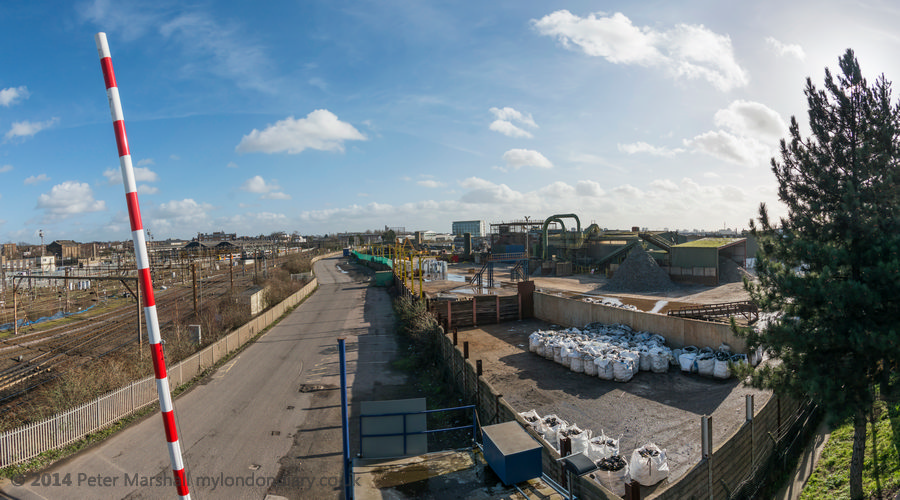
There is a well-hidden but well-used footpath that follows the side of the Willesden Junction to Clapham Junction line as it goes over the many tracks of the main line to Euston, before descending into the industrial estate. It used to overlook a huge metal reclamation site, but this seems to have been very much cleared up now.
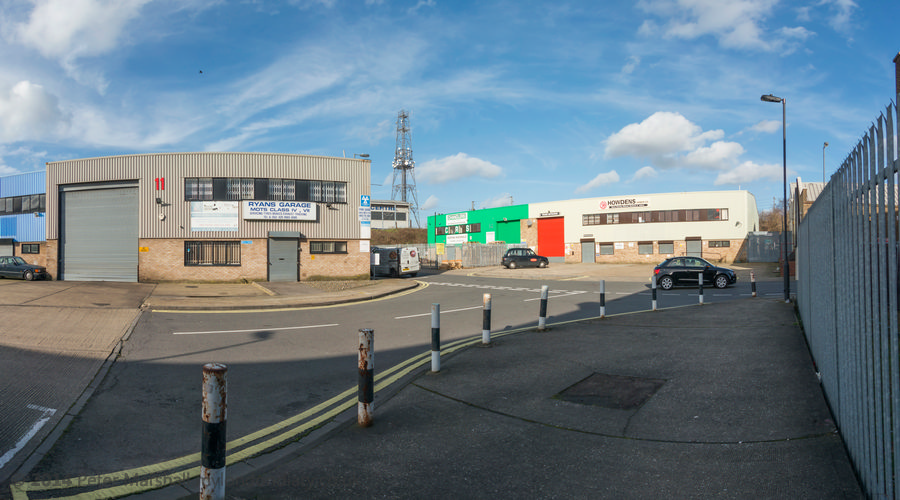
Much of the area north of the canal is now a huge car auction site, but there are also other companies around with warehouses and factories. Another path now leads to a footbridge across to the canal tow path on the opposite bank, but having gone to it to take pictures I returned and made my way to Scrubs Lane (it leads past the North Pole to Wormwood Scrubs, one of London’s larger commons, but I didn’t go that far.)
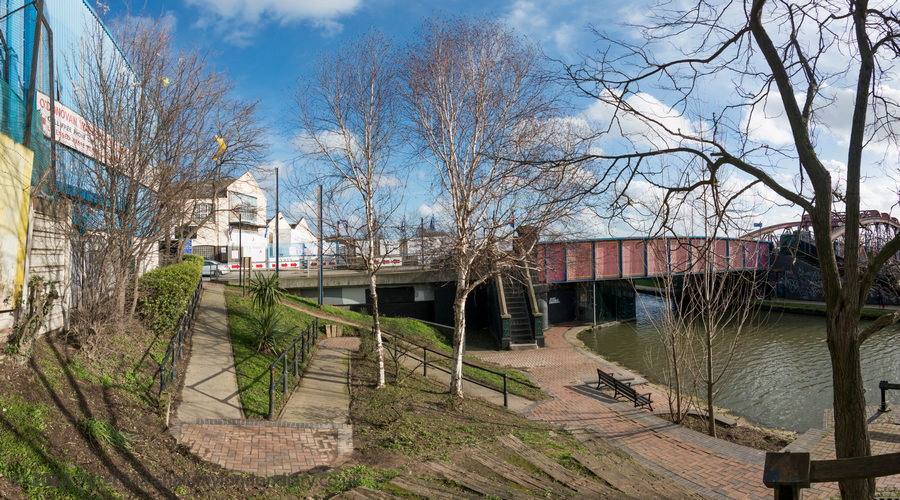
I sat on a bench to eat my sandwiches in the sun (it was surprisingly mild for London in February) in a small memorial park to Mary Seacole, a remarkable Jamaican woman who used the profits from her general store and boarding house in Jamaica to nurse wounded British soldiers in the Crimean war, as well as medical work in Jamaica, Cuba and Panama. The memorial park was created around the time of the bicentenary of her birth a few years ago here, close to where she was buried in St Mary’s Catholic cemetery in 1881. She has become a controversial figure in the debates over the construction and teaching of British history, with many feeling she was largely sidelined because she was black.
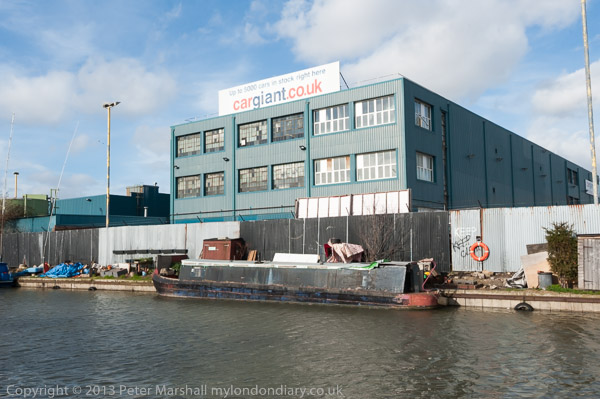
I crossed the canal and walked west along the towpath. Once past the Mary Seacole Garden and Mitre Junction it isn’t the most exciting of walks now. I was annoyed coming down onto the towpath to find a fence on top of the wall which I had photographed over years ago now making this impossible, at least without some way to raise my camera higher than I could reach up. And further on, what had once been a busy railway site at Old Oak Common now just had a few new distant sheds.
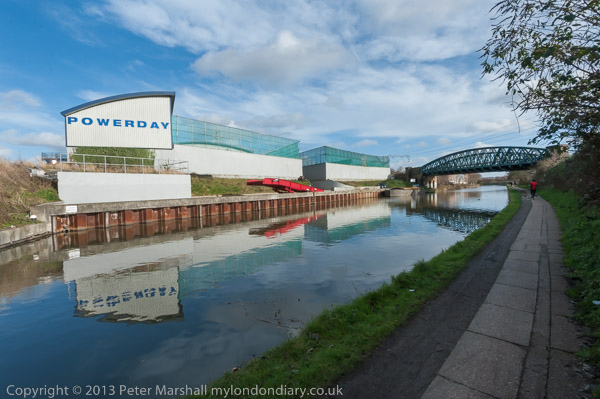
The top picture on this post was also something of a disappointment – and it works better on the less wide 16mm rectilinear view above, taken from a more distant viewpoint. But my disappointment was that there was a much better view from the train, a little before it reaches the bridge. The extra height makes a great difference, and there was a fence in the way so I couldn’t climb to get closer to the railway view.
More of the pictures from my walk, which continued with a demolition site, and, at the end of my bus ride to Willesden Green, a splendid 1930s building I photographed before in the 1980s, a Buddhist temple and some fading murals in Harlesden, Willesden & Mary Seacole
All pictures were taken with either a Nikon D700 with 16-35mm lens or a Nikon D800E with 16mm fisheye. The latter images were converted using PtGUI to equirectangular projection.
______________________________________________________
My London Diary : Buildings of London : River Lea/Lee Valley : London’s Industrial Heritage
All photographs on this and my other sites, unless otherwise stated, are taken by and copyright of Peter Marshall, and are available for reproduction or can be bought as prints.
To order prints or reproduce images
________________________________________________________